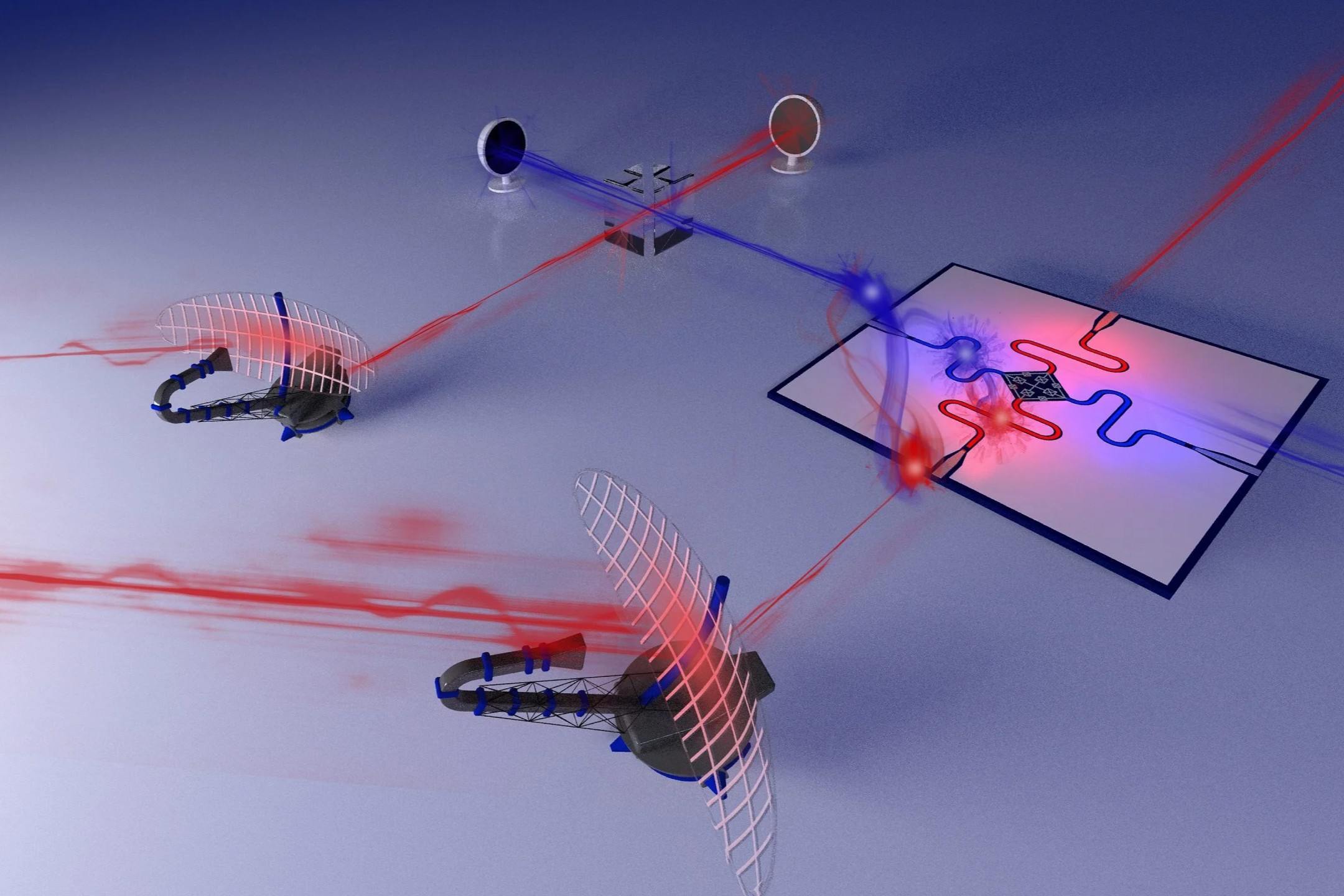
Quantum illumination sounds like something out of a sci-fi movie, but it's a real and fascinating concept in the world of physics. What is quantum illumination? It is a technique that uses quantum entanglement to improve the detection of objects in noisy environments. Imagine trying to find a needle in a haystack, but with a super-powered magnet. This method can enhance radar, medical imaging, and even security systems. Unlike traditional methods, quantum illumination can detect objects with higher accuracy, even when there's a lot of background noise. Curious about how this works and its potential applications? Let's dive into 30 intriguing facts about this cutting-edge technology.
What is Quantum Illumination?
Quantum illumination is a fascinating concept in the realm of quantum physics. It involves using quantum entanglement to improve the detection of objects in noisy environments. Here are some intriguing facts about this cutting-edge technology.
-
Quantum illumination leverages entangled photons to detect objects with greater accuracy than classical methods.
-
This technique can outperform traditional radar and lidar systems, especially in environments with high levels of noise.
-
Quantum illumination was first proposed by Seth Lloyd in 2008.
-
Unlike classical systems, quantum illumination can detect objects even when the signal is weak or obscured by noise.
-
The technology has potential applications in areas such as medical imaging, security, and communications.
How Does Quantum Illumination Work?
Understanding the mechanics behind quantum illumination can be complex, but breaking it down into simpler terms helps. Essentially, it uses pairs of entangled photons to gather information about an object.
-
Entangled photons are pairs of light particles whose properties are interconnected, no matter the distance between them.
-
When one photon of the pair interacts with an object, its entangled partner retains information about that interaction.
-
This retained information can then be analyzed to detect the presence and properties of the object.
-
The process involves sending one photon towards the target while keeping its entangled partner in a controlled environment.
-
By comparing the properties of the returning photon with its entangled partner, scientists can extract valuable information about the target.
Applications of Quantum Illumination
The potential applications of quantum illumination are vast and varied. From healthcare to national security, this technology could revolutionize many fields.
-
In medical imaging, quantum illumination could lead to more accurate and less invasive diagnostic tools.
-
Security systems could use quantum illumination to detect hidden objects or threats with higher precision.
-
Quantum illumination can improve underwater navigation and object detection, crucial for submarine operations.
-
The technology could enhance satellite imaging, providing clearer images of Earth's surface.
-
Quantum illumination might also play a role in developing more secure communication systems, resistant to eavesdropping.
Advantages Over Classical Methods
Quantum illumination offers several advantages over traditional detection methods. These benefits make it a promising area of research and development.
-
It provides higher sensitivity and accuracy in detecting objects in noisy environments.
-
Quantum illumination can operate effectively even with low-intensity signals.
-
The technology is less susceptible to interference and noise compared to classical systems.
-
It can detect objects that are otherwise invisible to traditional radar and lidar.
-
Quantum illumination systems can be more compact and energy-efficient than their classical counterparts.
Challenges and Future Prospects
Despite its potential, quantum illumination faces several challenges that researchers are working to overcome. Understanding these hurdles is crucial for the technology's future development.
-
One major challenge is the generation and manipulation of entangled photons on a large scale.
-
Maintaining the entanglement of photons over long distances is another significant hurdle.
-
The technology requires highly sensitive detectors to measure the properties of entangled photons accurately.
-
Integrating quantum illumination systems with existing technologies poses technical and logistical challenges.
-
Researchers are exploring new materials and methods to improve the efficiency and scalability of quantum illumination.
Quantum Illumination in Popular Culture
Quantum illumination has also captured the imagination of popular culture, appearing in various forms of media and entertainment.
-
The concept has been featured in science fiction novels and movies, often depicted as advanced detection or communication systems.
-
TV shows exploring futuristic technologies sometimes reference quantum illumination as a cutting-edge development.
-
Video games set in advanced or futuristic settings may include quantum illumination as part of their technological arsenal.
-
The idea of using quantum entanglement for detection has inspired numerous speculative articles and discussions in popular science magazines.
-
Quantum illumination continues to be a topic of interest in academic and popular science communities, sparking debates and discussions about its potential and implications.
Quantum Illumination: A Fascinating Frontier
Quantum illumination isn't just a buzzword. It’s a game-changer in the world of quantum physics and technology. From its potential to revolutionize imaging and detection systems to its applications in secure communication, this field holds immense promise. Researchers are constantly pushing boundaries, exploring new ways to harness its power.
Understanding the basics of quantum illumination can open doors to appreciating its future impact. Whether you’re a student, a tech enthusiast, or just curious, keeping an eye on this evolving field is worth it. The journey of quantum illumination is just beginning, and who knows what groundbreaking discoveries lie ahead? Stay curious, stay informed, and watch as this fascinating frontier unfolds.
Was this page helpful?
Our commitment to delivering trustworthy and engaging content is at the heart of what we do. Each fact on our site is contributed by real users like you, bringing a wealth of diverse insights and information. To ensure the highest standards of accuracy and reliability, our dedicated editors meticulously review each submission. This process guarantees that the facts we share are not only fascinating but also credible. Trust in our commitment to quality and authenticity as you explore and learn with us.
